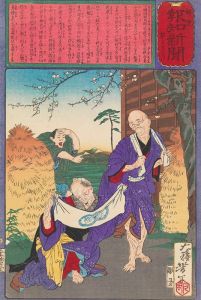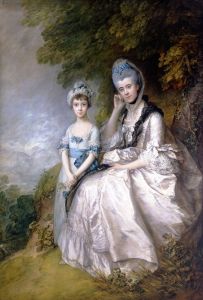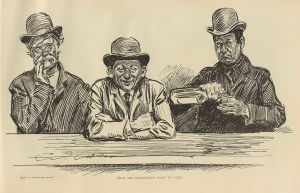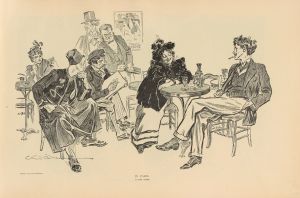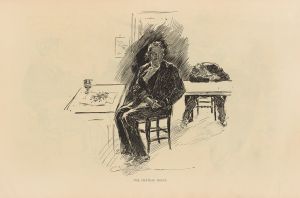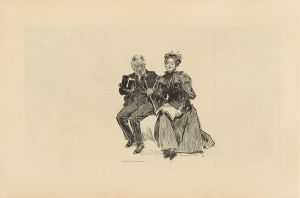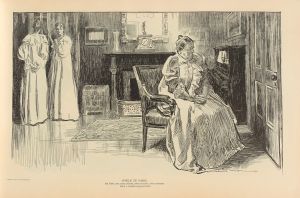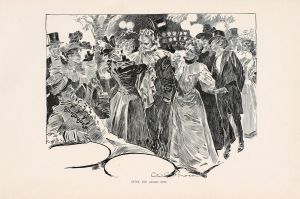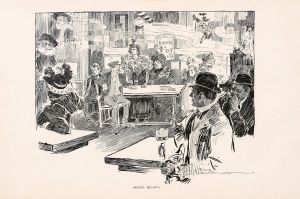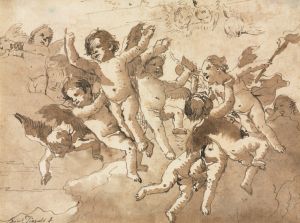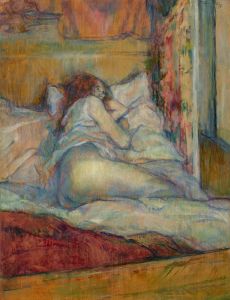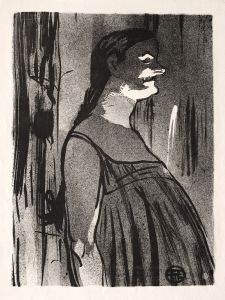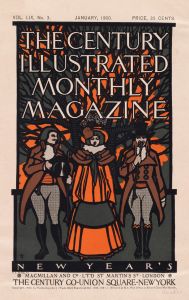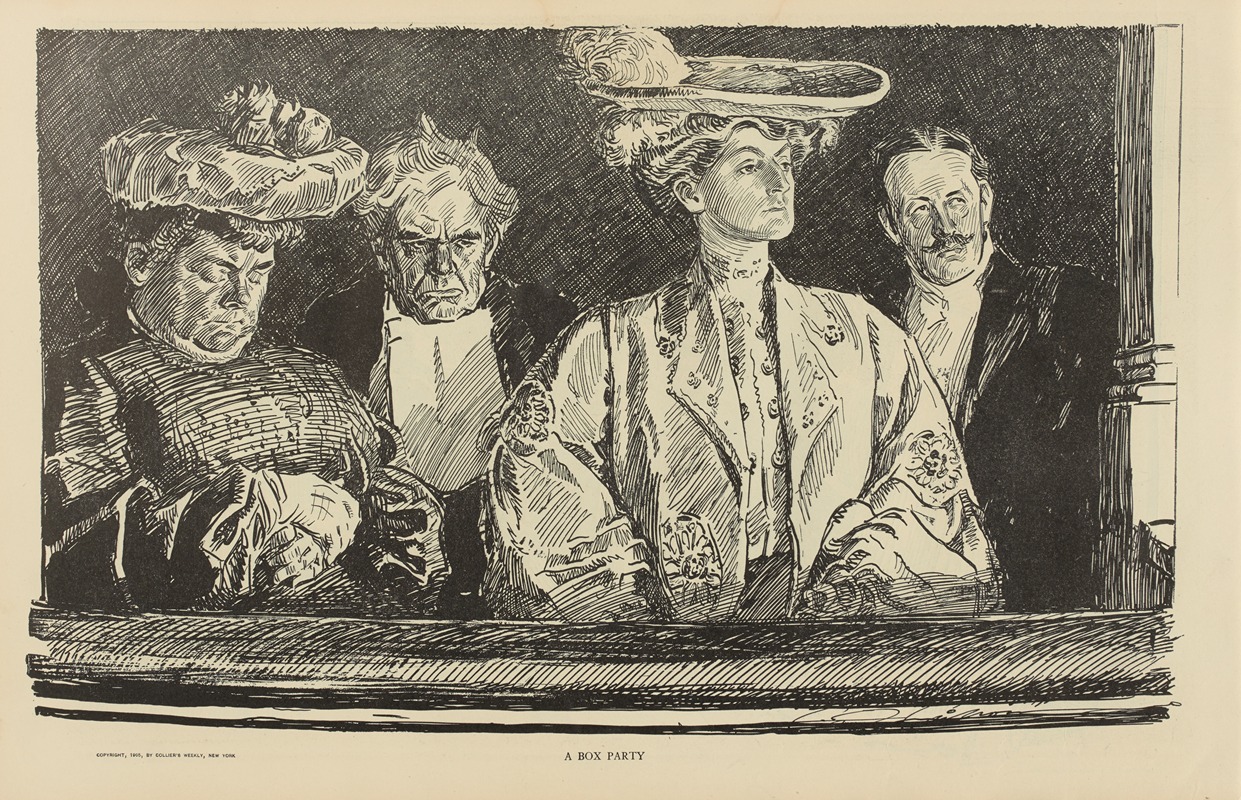
A box party
A hand-painted replica of Charles Dana Gibson’s masterpiece A box party, meticulously crafted by professional artists to capture the true essence of the original. Each piece is created with museum-quality canvas and rare mineral pigments, carefully painted by experienced artists with delicate brushstrokes and rich, layered colors to perfectly recreate the texture of the original artwork. Unlike machine-printed reproductions, this hand-painted version brings the painting to life, infused with the artist’s emotions and skill in every stroke. Whether for personal collection or home decoration, it instantly elevates the artistic atmosphere of any space.
Charles Dana Gibson was an influential American illustrator, best known for his creation of the "Gibson Girl," an iconic representation of the American woman at the turn of the 20th century. His work captured the spirit and style of the era, and his illustrations were widely published in popular magazines such as Life, Scribner's, and Harper's. Among his many works, "A Box Party" stands out as a notable example of his artistic style and social commentary.
"A Box Party" is a black-and-white illustration that depicts a scene from a theater box, a popular social setting during the late 19th and early 20th centuries. The illustration showcases Gibson's keen eye for detail and his ability to capture the nuances of social interaction. In the image, elegantly dressed men and women are seated in a theater box, engaged in conversation and observation of the performance below. The women in the illustration are depicted with the characteristic poise and fashion of the "Gibson Girl," with upswept hair and stylish gowns, embodying the ideals of beauty and sophistication of the time.
Gibson's work often reflected the social dynamics and gender roles of his era. In "A Box Party," the interaction between the characters can be seen as a commentary on the social rituals and expectations of the upper class. The theater box setting itself was a symbol of status and privilege, where the elite could see and be seen. This setting allowed Gibson to explore themes of social hierarchy, gender roles, and the performative nature of social gatherings.
The "Gibson Girl" was more than just a fashion icon; she represented a new ideal for women, one that combined beauty, independence, and intelligence. In "A Box Party," the women are portrayed with a sense of agency and confidence, reflecting the changing attitudes towards women's roles in society. This was a time when women were beginning to assert more independence, and the "Gibson Girl" became a symbol of this shift.
Gibson's illustrations were not only popular in their time but also had a lasting impact on American culture. His work helped shape the visual language of the early 20th century and influenced subsequent generations of artists and illustrators. "A Box Party," like many of his works, captures a moment in time with elegance and insight, offering a window into the social customs and cultural values of the period.
In summary, "A Box Party" by Charles Dana Gibson is a significant piece that exemplifies the artist's skill in illustration and social commentary. Through his depiction of a theater box scene, Gibson provides insight into the social dynamics and gender roles of the early 20th century, while also contributing to the enduring legacy of the "Gibson Girl" as an icon of American culture.






